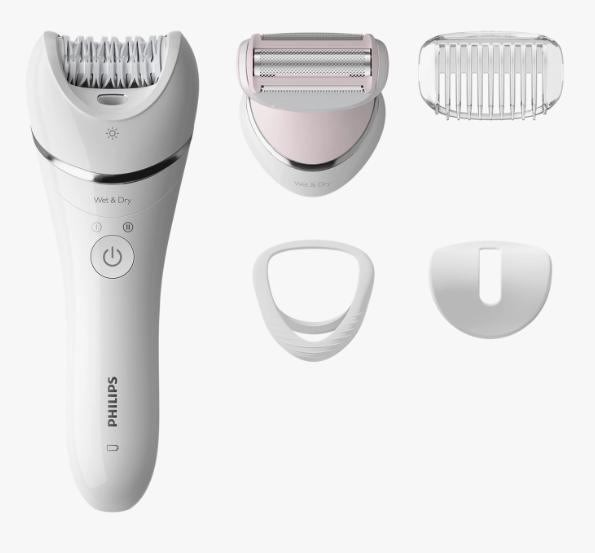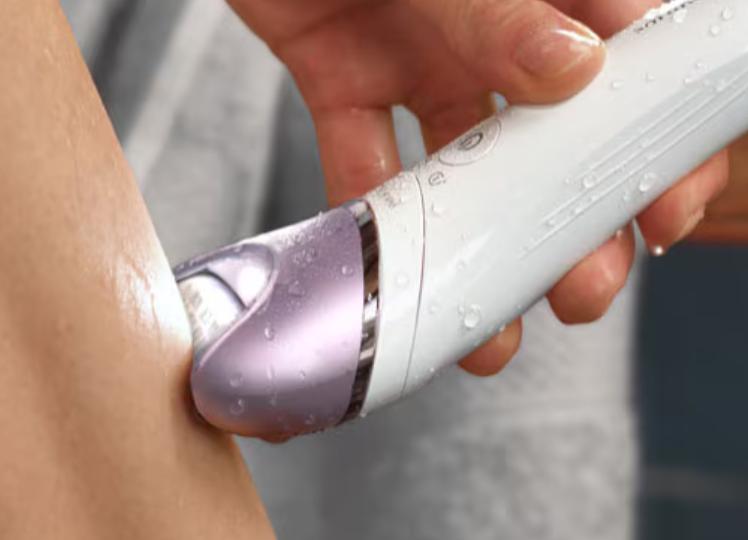How Does an Epilator Work? Understanding the Basics
Epilation is an effective hair removal method that offers a longer-lasting result compared to shaving. If you’re tired of daily shaving and want smoother skin, using an epilator could be a great alternative. This blog covers the basics of how epilators work, including the answer to how does an epilator work, the steps involved, and essential tips for effective use. By understanding the process, you can achieve smooth and hair-free skin for weeks.

What is an Epilator?
An epilator is a handheld electric device designed to remove hair directly from the roots. Unlike shaving, which merely cuts hair at the skin’s surface, epilators work by mechanically grasping multiple hairs simultaneously and pulling them out. This method closely mimics the effects of waxing but can be less messy and more convenient. Epilators are equipped with rotating tweezers or discs that capture hairs as you glide the device across your skin. As a result, you’ll enjoy smoother skin for a longer period since it takes time for the hair to grow back.
These devices come in various forms and features. Some are designed for specific body parts, like facial epilators, while others are more versatile and can be used on both small and large areas. Some models are cordless for added convenience, while others may include wet-and-dry functionality, allowing for use in the shower. With advancements in technology, modern epilators also come with attachments and settings that cater to different skin types and sensitivities, making hair removal a more comfortable experience.
How Does an Epilator Work?
Epilators function using a simple yet effective mechanism to remove hair from the root. The device comprises a series of tiny, rotating mechanical tweezers or discs located at the head. As the device is moved across the skin, the tweezers repeatedly open and close, gripping multiple hairs at once and pulling them out from the follicle. This action is continuous and rapid, resembling a plucking motion across the area being treated.
The effectiveness of an epilator largely depends on its design and speed settings. Higher-speed settings can capture and remove more hairs swiftly, making it suitable for larger areas like legs. Lower speed settings, on the other hand, offer more precision and gentleness, ideal for sensitive areas such as underarms or the bikini line. Certain epilators also come with specialized attachments that aid in reducing discomfort and increasing efficiency, such as massage rollers or pre-epilation wipes.
How to Use an Epilator: Step-by-Step Guide
Preparing Your Skin for Epilation
Preparation is key for a successful epilation session. Ensure your skin is clean and dry before starting. Exfoliation can help to remove dead skin cells and reduce the risk of ingrown hairs. Use a gentle scrub or exfoliating glove a day before you plan to epilate. Before you begin, make sure the epilator is fully charged if it’s a cordless model.
The Epilation Process: Techniques and Tips
Post-Epilation Care: Maintaining Smooth Skin
After epilation, apply a soothing lotion or aloe vera gel to calm the skin and reduce redness. Avoid excessive sun exposure and tight clothing immediately after to prevent irritation. Regularly moisturize your skin to maintain smoothness and prevent dryness.
Benefits of Using an Epilator
Benefits

Conclusion
Understanding how does an epilator works and mastering its use can significantly enhance your hair removal routine. While it may come with a few initial discomforts and a learning curve, the long-lasting results and cost savings make it worthwhile. Preparation, proper technique, and post-epilation care are essential steps to achieve the best outcome with minimal irritation. Consider the benefits and drawbacks to decide if an epilator is the right choice for you.
FAQ
Is epilation painful?
Epilation can be somewhat painful, particularly for beginners. The sensation is often described as similar to plucking multiple hairs at once. However, with continued use, many people find the discomfort decreases as they get used to the process.
How often should I use an epilator?
The frequency of epilation depends on your hair growth rate. On average, using an epilator every three to four weeks should be sufficient to maintain smooth skin. Regular sessions can lead to finer and sparser hair regrowth over time.
Can I use an epilator on sensitive skin areas?
Yes, you can use an epilator on sensitive skin areas like the face, underarms, and bikini line. However, it’s crucial to use a device with various speed settings and attachments designed for sensitive regions. Begin with lower settings to minimize pain and irritation.
